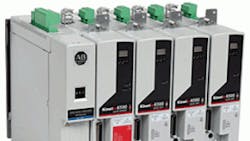EtherNet/IP for safety: Network simplifies integration
The challenges of safety integration are most apparent to motion design engineers, because of all industrial systems, moving machines pose significant risks of plant-operator injury and property damage.
Dictating some safety requirements for dynamic machines is IEC/EN/AS 60204, which in 2005 freed design engineers from old mandates that machines rely on electromechanical devices for the removal of power during emergency stops. This has spurred a design revolution — in which safety is increasingly preintegrated.
Old connections cumbersome
Traditionally, safety networks required specialized drive and relay connections, I/O points, and peripheral guards all hardwired on a segregated network. In fact, until recently, machine builders had to separate most networks based on the application — SERCOS for motion, a network for industrial automation devices, and yet another to enable plant floor and enterprise connectivity. Safety functions were some of the most cumbersome to integrate.
Protocols make it easier
Now, one universal networking option is EtherNet/IP. Its newer protocols allow most functions — including those for motion and safety — to be reliably and legally integrated into larger system controls.
Two years ago, the international association ODVA, Ann Arbor, Mich., developed CIP Safety, a Common Industrial Protocol that enables components to drive all safety communications. Then last year, ODVA extended the CIP with CIP Motion for EtherNet/IP, further simplifying the work of those who build, configure, operate, and maintain moving machines.
The modules work together to make flexible motion designs that adhere to safety requirements. What is more, Safety CIP allows expansion of functions on many systems already running EtherNet/IP, without requiring extensive infrastructure upgrades.
Remote diagnostics
With an EtherNet/IP connection, machine builders can also provide secure, remote diagnostics for a machine, including its critical servo assets. This helps keep machines up and running, saving time and money for both machine builders and their customers.
For example, end users can relay condition information from the plant floor back to the machine builder for value-added monitoring and analysis services. Remote technicians can then securely connect to the machine to monitor critical parameters and take action before equipment fails, helping machine builders save time, simplify maintenance, and ensure safe operation.
These tips are provided by Rockwell Automation, Inc. For more information on Kinetix servo drives, visit ab.com/motion. Otherwise, connect at facebook.com/pages/Rockwell-Automation-Safety-Solutions.
